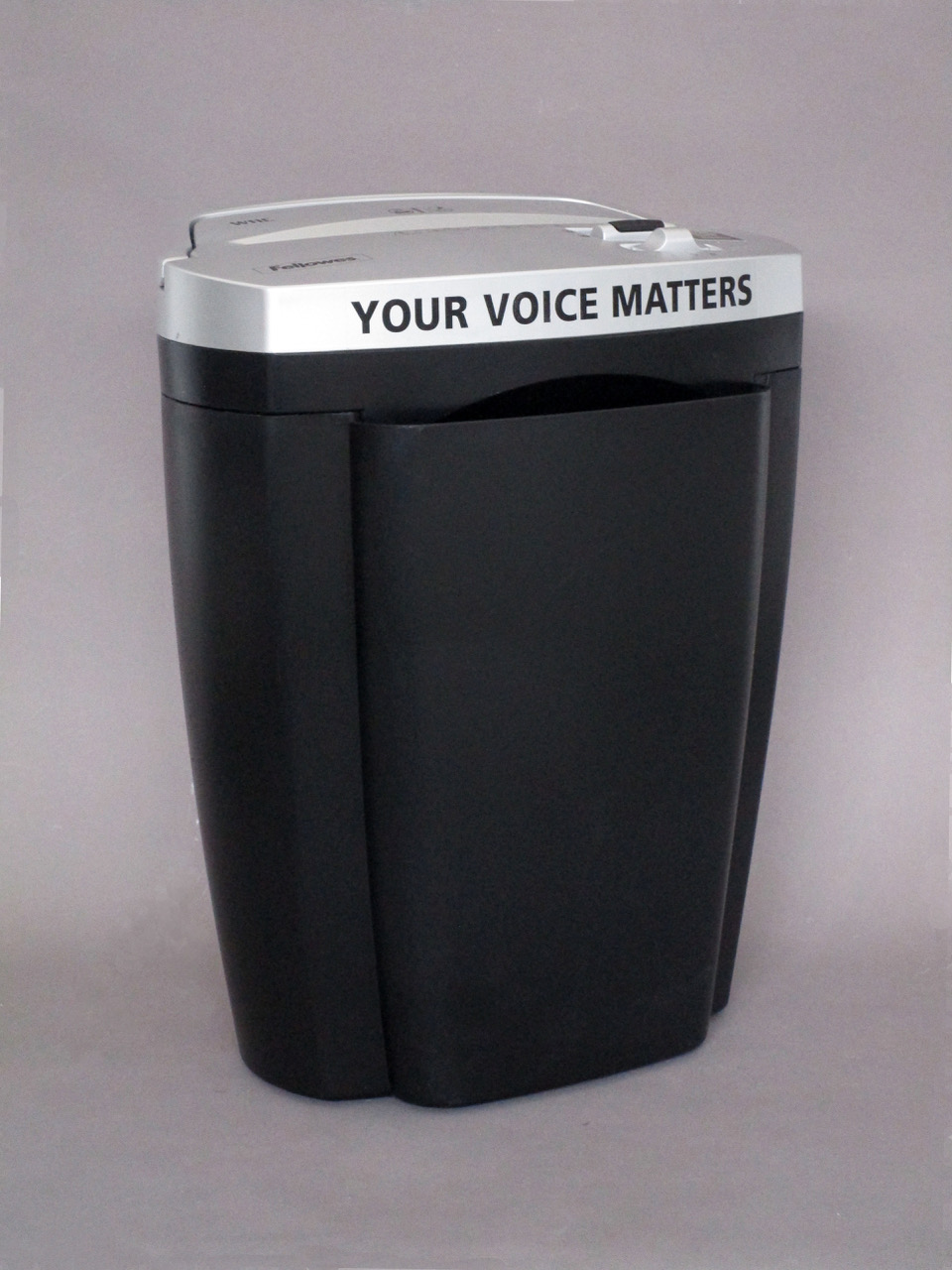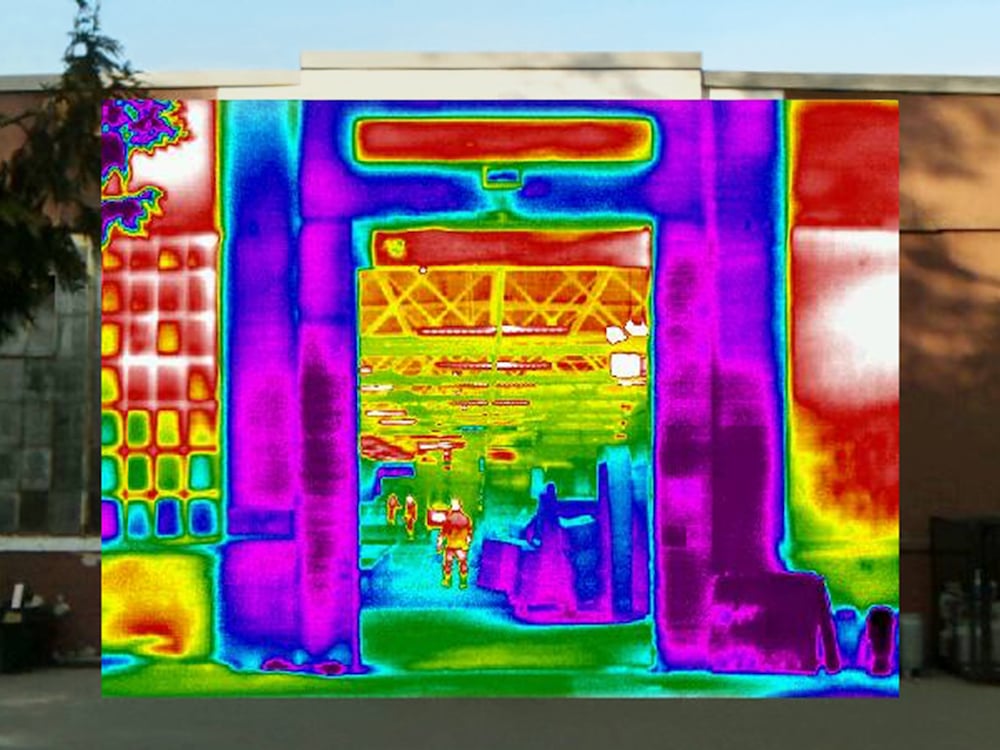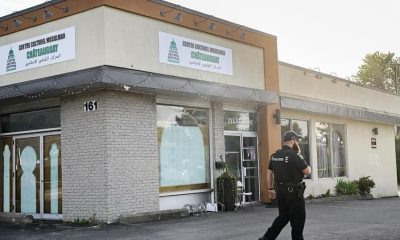Art
Art by Emily Carr Faculty Zings Their Own Employer – TheTyee.ca
Visual artist Jay White considers himself lucky to have secured a tenure-track position at Emily Carr University of Art and Design. Now if he can only solve the problem of having to sleep in his car.
Until last fall White spent a decade as a sessional or non-regular instructor at Emily Carr, meaning he had to reapply to teach every semester because non-regular instructors have less job security and lack benefits compared to full-time faculty.
White became an assistant professor last September, and in three years he can start applying for a tenured or permanent faculty position.
But despite the newfound job security and pay increase, White, who rents on Bowen Island with his family, stays in Vancouver and sleeps in his van a couple of nights a week.
“To be able to work the number of hours I work and still have time with my family, I work here quite late,” said White. “And then at least I have my weekends to myself with my family.”
Untenable working conditions are the focus of “The Work of The Work,” the faculty’s first art exhibition since Emily Carr University of Art and Design relocated to the Great Northern Way campus over two years ago. The public exhibit opened Jan. 31 and runs until Feb. 14.
The theme is apt, according to Emily Carr’s faculty association, which says non-regular and permanent faculty alike are all struggling under a high workload and low salary scale. Their last collective agreement expired March 31, 2019, and bargaining has only recently begun.

By Alex Phillips.

By Henry Tsang, thermal imaging photograph.
In an emailed statement sent to The Tyee by Emily Carr University communications staff, the university administration said they support faculty’s academic freedom and freedom of expression anywhere, including in on-campus exhibitions:
“Institutional critique has a strong and important history within contemporary art and design practice, and the University wholly supports the right of faculty to participate in that tradition,” the statement read.
“The right of faculty to have an annual show at the university is guaranteed by their collective agreement, as is their right to curate the exhibition without oversight from administration. ECU’s administration is pleased to support faculty exhibitions, including The Work of the Work. These exhibitions permit students a greater depth of insight into their faculty’s creative and professional practices.”
The administration declined any further comment to avoid “bargaining in the media.”
But in “The Work of The Work,” faculty are bargaining through mixed media and the theme is anything but ambiguous, with pieces calling out the university for: an overreliance on non-regular faculty (who teach over 50 per cent of classes); lower pay and higher workload than other Canadian art and design post-secondary; and no studio space or time for their own art practice — the reason, White says, they were hired to teach students in the first place.
“It’s not like a self-serving thing, it’s about what a university does and why people come to a university, is to have people who are doing that work, who are deep into their fields,” said White, who is working on art projects including a graphic novel, in addition to his course work.
Art by Valérie d. Walker. Photo by Katie Hyslop.
Art by George Rammell. Photo by Katie Hyslop.
Art by Terra Poirier. Photo by Katie Hyslop.
Art by Amelia Guimarin and Alexandra Phillips respectively. Photo by Katie Hyslop.
Art by Vjeko Sager. Photo by Katie Hyslop.
The art exhibition goes hand in hand with Emily Carr grad Terra Poirier’s 2018 book Non-Regular: Precarious academic labour at Emily Carr University of Art + Design, which used art by Emily Carr non-regular instructors to shine a light on their working conditions.
Non-regular faculty fall into four different categories: lecturer, sessional instructor, adjunct instructor, and artist/designer/scholar in residence. Sessional instructors are teaching 46 per cent of courses in 2019-20, while nine per cent were taught by lecturers, and 45 per cent by regular faculty.
Lecturers do receive some health and welfare benefits, as well as sick leave, vacation pay, and leaves of absence, while Emily Carr communications staff told The Tyee sessional and adjunct instructors receive “some benefits” and a seven per cent pay increase to make up for benefits they don’t receive.
All non-regular instructors have the right of first refusal for teaching a course, provided they have taught it four times consecutively.
But while “The Work of The Work” makes a distinction between the working conditions of non-regular and permanent faculty, the exhibit asserts neither group finds themselves in a tenable situation.
Associate professor Henry Tsang spent 13 years as a non-regular instructor before getting a tenure track position in 2005. He says Emily Carr’s normal teaching load — five studio courses where students work on their art, media and design projects, or four academic courses per semester — is outsized compared to most B.C. universities, which are capped at four courses per semester.
Let alone the three other art and design post-secondaries in Canada. For example, the Ontario College of Art and Design University requires faculty to teach half as much as Emily Carr faculty, and unlike Emily Carr’s faculty, the Ontario College does not require professors to conduct research.
“When you’re spread thin, everything is thin,” he said, adding it is difficult to attract and retain non-regular faculty unless they already live in Vancouver, because the cost of living is too high and the pay — $5,678 per studio course for non-regular faculty — is too low.
“The way that we’re struggling is actually stifling.”
Emily Carr became a special purpose teaching university in 2008, along with Kwantlen Polytechnic University, Vancouver Island University, University of the Fraser Valley and Capilano University.
But the art and design school shouldn’t be compared to those institutions, Tsang and White say, because their faculty have a maximum of four academic courses per semester, don’t teach studio courses, and don’t require studio space for their own work.
Instead they compare Emily Carr to Canada’s three other art and design post-secondaries: Nova Scotia College of Art and Design; Ontario College of Art and Design University; and the Alberta University of the Arts. Depending on the institute, faculty salaries can range from 30 to 60 per cent higher than Emily Carr’s, depending on tenure and senority. As of March 31, 2019, Emily Carr’s full-time faculty salaries ranged from almost $57,000 to nearly $91,500.
Individuals typically don’t have the luxury of criticizing their employer in their own workspace, says Sylvia Fuller, a University of British Columbia sociology professor who researches labour and work. Especially if they’re not unionized.
“If there was one individual worker who was speaking out, not in an organized way — say writing on Facebook about how the situation in their company was unfair or their manager was incompetent, they would probably be fired,” she said.
“Individually, of course, speaking out is incredibly risky for workers. So most workers don’t do it.”
But there’s power in numbers, Fuller said, because when unions make noise — like the Justice for Janitors campaign in Canada and the U.S., or the Georgia Hotel strike in Vancouver last year — it draws public attention and opinion. That attention can impact employers’ public reputation, and a heavy-handed response could make things worse.
“Those are some good examples of where workers have banded together and made an issue of really the hypocrisy or the disjuncture of relatively large, powerful, affluent institutions treating their most vulnerable workers really poorly or in ways that they can’t meet their basic needs,” Fuller said.
Like every public institution in the province, Emily Carr faculty are limited to the provincial government’s current bargaining mandate of a three-year contract with two per cent annual salary increases.
That doesn’t limit Emily Carr administration from making changes that don’t cost money, said White, like granting seniority to non-regular faculty. And Tsang noted they aren’t expecting to catch up to their peers at the Ontario College in just one contract.
“If we were to match our peers, that would be a huge leap,” Tsang said. “We just want some step in that direction.” ![]()
Art
Calvin Lucyshyn: Vancouver Island Art Dealer Faces Fraud Charges After Police Seize Millions in Artwork

In a case that has sent shockwaves through the Vancouver Island art community, a local art dealer has been charged with one count of fraud over $5,000. Calvin Lucyshyn, the former operator of the now-closed Winchester Galleries in Oak Bay, faces the charge after police seized hundreds of artworks, valued in the tens of millions of dollars, from various storage sites in the Greater Victoria area.
Alleged Fraud Scheme
Police allege that Lucyshyn had been taking valuable art from members of the public under the guise of appraising or consigning the pieces for sale, only to cut off all communication with the owners. This investigation began in April 2022, when police received a complaint from an individual who had provided four paintings to Lucyshyn, including three works by renowned British Columbia artist Emily Carr, and had not received any updates on their sale.
Further investigation by the Saanich Police Department revealed that this was not an isolated incident. Detectives found other alleged victims who had similar experiences with Winchester Galleries, leading police to execute search warrants at three separate storage locations across Greater Victoria.
Massive Seizure of Artworks
In what has become one of the largest art fraud investigations in recent Canadian history, authorities seized approximately 1,100 pieces of art, including more than 600 pieces from a storage site in Saanich, over 300 in Langford, and more than 100 in Oak Bay. Some of the more valuable pieces, according to police, were estimated to be worth $85,000 each.
Lucyshyn was arrested on April 21, 2022, but was later released from custody. In May 2024, a fraud charge was formally laid against him.
Artwork Returned, but Some Remain Unclaimed
In a statement released on Monday, the Saanich Police Department confirmed that 1,050 of the seized artworks have been returned to their rightful owners. However, several pieces remain unclaimed, and police continue their efforts to track down the owners of these works.
Court Proceedings Ongoing
The criminal charge against Lucyshyn has not yet been tested in court, and he has publicly stated his intention to defend himself against any pending allegations. His next court appearance is scheduled for September 10, 2024.
Impact on the Local Art Community
The news of Lucyshyn’s alleged fraud has deeply affected Vancouver Island’s art community, particularly collectors, galleries, and artists who may have been impacted by the gallery’s operations. With high-value pieces from artists like Emily Carr involved, the case underscores the vulnerabilities that can exist in art transactions.
For many art collectors, the investigation has raised concerns about the potential for fraud in the art world, particularly when it comes to dealing with private galleries and dealers. The seizure of such a vast collection of artworks has also led to questions about the management and oversight of valuable art pieces, as well as the importance of transparency and trust in the industry.
As the case continues to unfold in court, it will likely serve as a cautionary tale for collectors and galleries alike, highlighting the need for due diligence in the sale and appraisal of high-value artworks.
While much of the seized artwork has been returned, the full scale of the alleged fraud is still being unraveled. Lucyshyn’s upcoming court appearances will be closely watched, not only by the legal community but also by the wider art world, as it navigates the fallout from one of Canada’s most significant art fraud cases in recent memory.
Art collectors and individuals who believe they may have been affected by this case are encouraged to contact the Saanich Police Department to inquire about any unclaimed pieces. Additionally, the case serves as a reminder for anyone involved in high-value art transactions to work with reputable dealers and to keep thorough documentation of all transactions.
As with any investment, whether in art or other ventures, it is crucial to be cautious and informed. Art fraud can devastate personal collections and finances, but by taking steps to verify authenticity, provenance, and the reputation of dealers, collectors can help safeguard their valuable pieces.
Art
Ukrainian sells art in Essex while stuck in a warzone – BBC.com
[unable to retrieve full-text content]
Ukrainian sells art in Essex while stuck in a warzone BBC.com

Source link
Art
Somerset House Fire: Courtauld Gallery Reopens, Rest of Landmark Closed
The Courtauld Gallery at Somerset House has reopened its doors to the public after a fire swept through the historic building in central London. While the gallery has resumed operations, the rest of the iconic site remains closed “until further notice.”
On Saturday, approximately 125 firefighters were called to the scene to battle the blaze, which sent smoke billowing across the city. Fortunately, the fire occurred in a part of the building not housing valuable artworks, and no injuries were reported. Authorities are still investigating the cause of the fire.
Despite the disruption, art lovers queued outside the gallery before it reopened at 10:00 BST on Sunday. One visitor expressed his relief, saying, “I was sad to see the fire, but I’m relieved the art is safe.”
The Clark family, visiting London from Washington state, USA, had a unique perspective on the incident. While sightseeing on the London Eye, they watched as firefighters tackled the flames. Paul Clark, accompanied by his wife Jiorgia and their four children, shared their concern for the safety of the artwork inside Somerset House. “It was sad to see,” Mr. Clark told the BBC. As a fan of Vincent Van Gogh, he was particularly relieved to learn that the painter’s famous Self-Portrait with Bandaged Ear had not been affected by the fire.
Blaze in the West Wing
The fire broke out around midday on Saturday in the west wing of Somerset House, a section of the building primarily used for offices and storage. Jonathan Reekie, director of Somerset House Trust, assured the public that “no valuable artefacts or artworks” were located in that part of the building. By Sunday, fire engines were still stationed outside as investigations into the fire’s origin continued.
About Somerset House
Located on the Strand in central London, Somerset House is a prominent arts venue with a rich history dating back to the Georgian era. Built on the site of a former Tudor palace, the complex is known for its iconic courtyard and is home to the Courtauld Gallery. The gallery houses a prestigious collection from the Samuel Courtauld Trust, showcasing masterpieces from the Middle Ages to the 20th century. Among the notable works are pieces by impressionist legends such as Edouard Manet, Claude Monet, Paul Cézanne, and Vincent Van Gogh.
Somerset House regularly hosts cultural exhibitions and public events, including its popular winter ice skating sessions in the courtyard. However, for now, the venue remains partially closed as authorities ensure the safety of the site following the fire.
Art lovers and the Somerset House community can take solace in knowing that the invaluable collection remains unharmed, and the Courtauld Gallery continues to welcome visitors, offering a reprieve amid the disruption.
-

 Politics20 hours ago
Politics20 hours agoGreens reject acrimony, setting them apart from other B.C. parties: Furstenau
-

 Politics20 hours ago
Politics20 hours agoA look at British Columbia New Democratic Party Leader David Eby
-

 Politics20 hours ago
Politics20 hours agoA look at Sonia Furstenau, leader of the Green Party of British Columbia
-

 News18 hours ago
News18 hours agoB.C. election campaign officially starts; Eby campaign bus on road
-

 Politics18 hours ago
Politics18 hours agoNew Brunswick Liberals ask Higgs to apologize for ‘joke’ about dead supporter
-

 News20 hours ago
News20 hours agoThree injured at Quebec mosque while trying to disarm man carrying knife: official
-

 News20 hours ago
News20 hours agoA look at John Rustad, leader of the Conservative Party of British Columbia
-

 News20 hours ago
News20 hours agoOttawa’s $2B loan for satellites has Tories calling for Elon Musk to step in





















